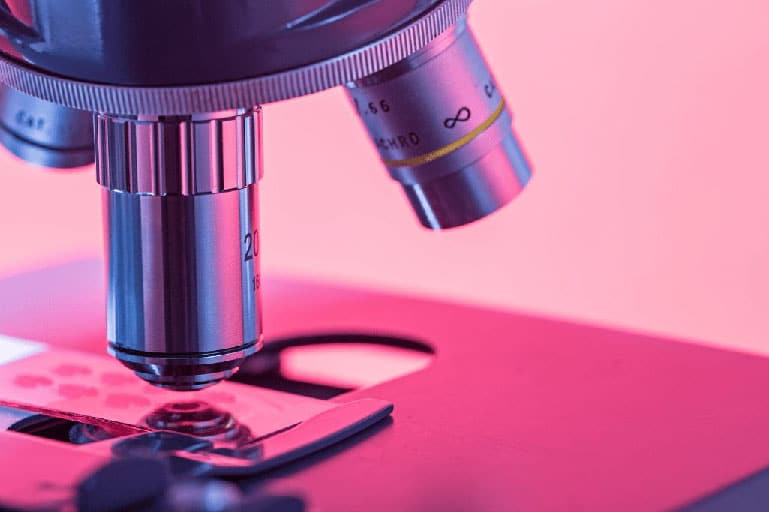
Diagnostic Tests
Types of Biopsies
Choose from the menu or scroll down to read about different biopsies:
Excisional/Incisional Biopsy
This type of biopsy is the best to establish an initial diagnosis of lymphoma because it allows for the removal of bigger samples than other biopsy procedures. The larger the sample, the more tissue the pathologist can examine, which improves the accuracy of diagnosis.
In this procedure, a surgeon cuts through the skin to remove an entire lymph node (excisional biopsy) or a large portion of tissue (incisional biopsy).
If the lymph node is close to the skin surface, the procedure can be done under local anesthesia to numb the area. If the lymph node is in the chest or abdomen, the patient is sedated and the surgeon removes the tissue either laparoscopically (through a tube inserted in the abdomen) or by performing abdominal surgery.
Core Needle Biopsy
This procedure is used when the lymph nodes are deep in the chest or abdomen or in other locations that are difficult to reach with excisional biopsy, or when there are medical reasons for avoiding an excisional or incisional biopsy.
In this procedure, a large needle is inserted into a lymph node suspected to be cancerous and a small tissue sample is withdrawn.
A needle biopsy can be done under local anesthesia and stitches are usually not required.
Sometimes the material collected may not be adequate for diagnosis and a subsequent excisional or incisional biopsy may be necessary.
Bone Marrow Aspiration and Biopsy
A bone marrow biopsy or aspiration is not used for initial diagnosis but is commonly used to see if the lymphoma has spread, or to collect bone marrow for medical procedures such as stem cell transplant or chromosomal analysis. The bone marrow is the spongy, soft material found inside our bones where normal blood cells are generated.
For the aspiration part of this procedure, the doctor cleans and numbs the skin over the hip and inserts a thin hollow needle into the bone. The doctor uses a syringe to remove a small amount of liquid from the bone marrow. Even with the numbing local anesthetic, this procedure can be painful for a few seconds while the marros is withdrawn.
For the biopsy part of this procedure (which is usually done right after the aspiration), the doctor inserts a slightly larger needle to take out a small piece of bone and marrow. This procedure may also cause mild pain or a pressure sensation.
The procedure does not require any stitches. Patients who are anxious about the test should talk with their doctor and nurse to see whether taking a calming medication before the procedure would be helpful.
Fine Needle Aspirate (FNA) Biopsy
A fine needle aspirate (FNA) biopsy is, as the name implies, a type of biopsy performed with a very thin needle (smaller than that used for a core needle biopsy). Because of the small needle size, the sample will only contain scattered cells without preserving how the cells are actually arranged in the lymph node.
An FNA biopsy is most often used to check for return of the disease (relapse) and is virtually never used for the initial diagnosis.
Lumbar Puncture (Spinal Tap)
Sometimes this procedure is used to determine if the lymphoma has spread to the cerebrospinal fluid (CSF), the liquid found in the brain and spinal cord. Most types of lymphoma do not spread to the CSF. The doctor will order this test only for patients with certain types of lymphoma or who have symptoms suggesting that the disease has reached the brain.
For this procedure, the doctor inserts a thin needle into the lower back after the area has been numbed with a local anesthetic. The doctor then uses a small needle to remove a sample of fluid that will be sent to the lab for analysis.
A lumbar puncture can also be used to deliver small amounts of chemotherapy (usually cytarabine or methotrexate) directly into the fluid that bathes the brain.
Pleural or Peritoneal Fluid Sampling
This procedure is used to find out if the lymphoma has spread to the chest or abdomen where it can cause liquid to accumulate.
For this procedure, the doctor numbs the skin with a local anesthetic, inserts a small needle, and uses a syringe to remove a sample of the liquid for laboratory analysis. The liquid is called pleural fluid when found inside the chest and peritoneal fluid when found inside the abdomen.
Also Learn About:

